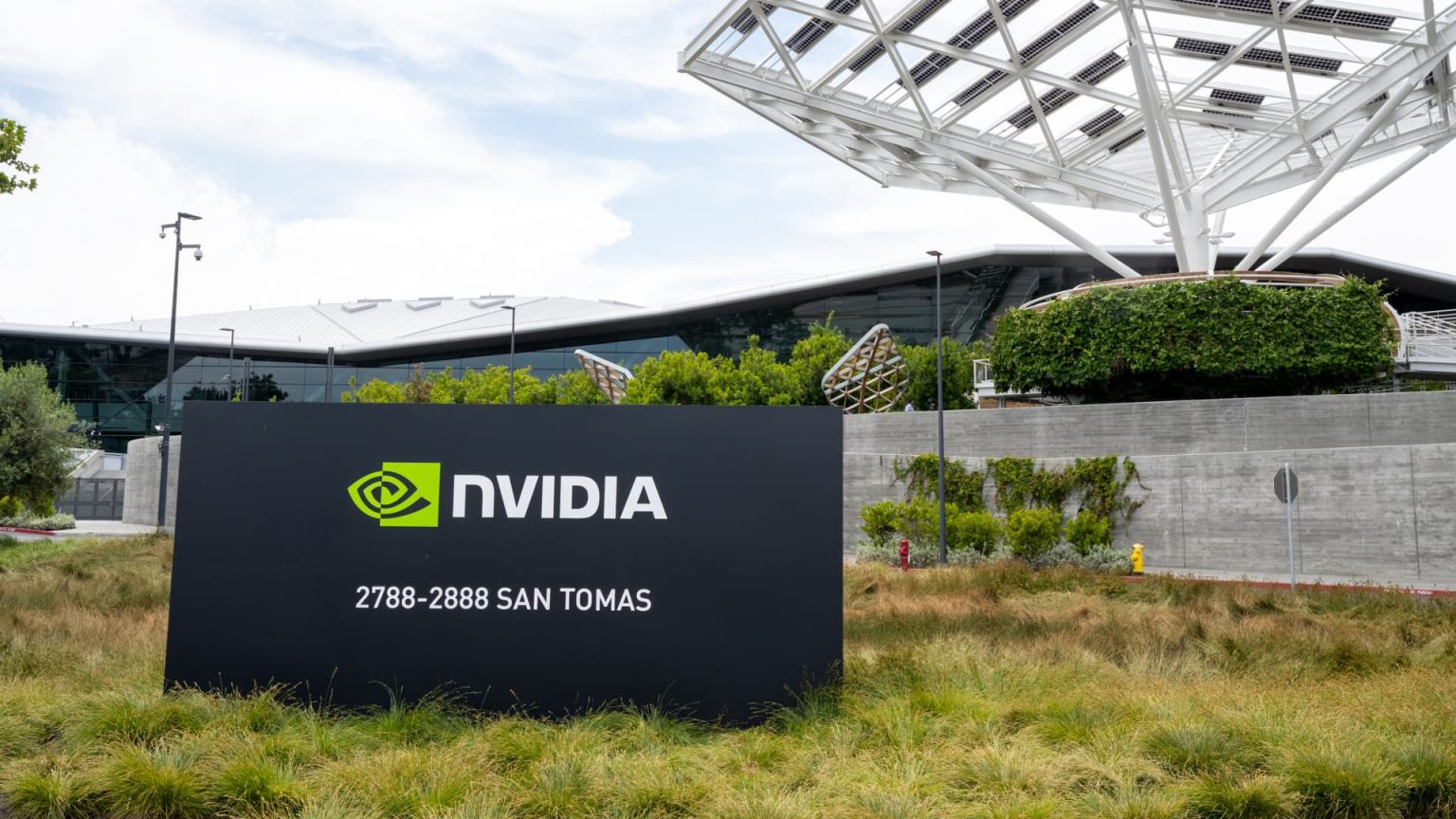Nvidia headquarters in Santa Clara, California, US, on Monday, June 5, 2023.
Marlena Sloss | Bloomberg | Getty Images
This report is from today’s CNBC Daily Open, our new, international markets newsletter. CNBC Daily Open brings investors up to speed on everything they need to know, no matter where they are. Like what you see? You can subscribe here.
What you need to know today
Tech rebound
U.S. stocks started the week on a positive note, thanks to a rebound in chipmakers and technology stocks. European markets traded mixed. The regional Stoxx 600 index inched up 0.15%, buoyed by a 4.35% increase in Philips. However, the U.K.’s FTSE 100 slid 0.23% and Spain’s IBEX 35 dipped 0.05%.
Nvidia, again
Nvidia shares popped 7% to hit $437.43 after Morgan Stanley released a note reiterating the company’s strengths. “Nvidia remains our Top Pick, with a backdrop of the massive shift in spending towards AI, and a fairly exceptional supply demand imbalance that should persist for the next several quarters,” the bank wrote.
Back to golf, not banking
Goldman Sachs’ former CEO Lloyd Blankfein can’t imagine returning to his old firm, he told CNBC. Blankfein was disputing a New York Times article that “misquoted” him. “I never used the word ‘return’,” Blankfein said. “I think my days working 100-hour weeks are over.” He then ended the conversation and went back to his golf game.
The Russian ‘Goldilocks’ for China?
China’s been one of Russia’s staunchest supporters since Moscow’s unprovoked invasion of Ukraine. But analysts think China wants Russia in a “Goldilocks” situation: Neither so strong that it could challenge Beijing, nor too weak where it leaves China isolated against the West. Other observers, however, argue China’s already risking geopolitical capital to help Russia.
[PRO] Rate cuts next year?
Goldman Sachs thinks inflation will fall to a level that the Federal Reserve is comfortable with by the first half of next year. The Fed, in turn, will begin lowering interest rates before the end of June 2024, the bank forecast.
The bottom line
Technology stocks and chipmakers helped major U.S. indexes regain their footing after ending last week in the red. The S&P 500 gained 0.58%, the Dow Jones Industrial Average inched up 0.07% and the Nasdaq Composite advanced 1.05%.
While that’s just a single data point, yesterday’s positive market movement echoes Oppenheimer chief investment strategist John Stoltzfus’ argument that the last two week of losses didn’t signal the end of the bull market. Rather, it was “a pause that refreshes” — a healthy adjustment to “oversold market conditions,” Stoltzfus wrote.
Still, stocks face pressure from rising bond yields. The two-year U.S. Treasury yield is a hair’s breadth away from 5% while the 10-year yield is 4.2% — pretty healthy returns for a risk-free investment. “Fixed income just looks relatively attractive, especially [relative to] where [we] were just a couple of years ago,” said Kevin Gordon, senior investment strategist at Charles Schwab.
At the same time, higher yields mean lower prices. That “creates the opportunity to buy bonds at a real rate that we haven’t seen in well over a decade,” Ashish Shah, chief investment officer of public investing at Goldman Sachs Asset Management, told CNBC.
The tussle between stocks and bonds, however, seems a pretty good problem to have. Recent data show both inflation receding and the U.S. economy expanding more than forecast. Whatever choice investors make, then, it’s made under a backdrop of heathy conditions — something rare since the pandemic.
Or, as Adam Crisafulli, founder of market intelligence firm Vital Knowledge, put it, “We don’t think investors should dive too far down rabbit holes of despair.”
Read the full article here




